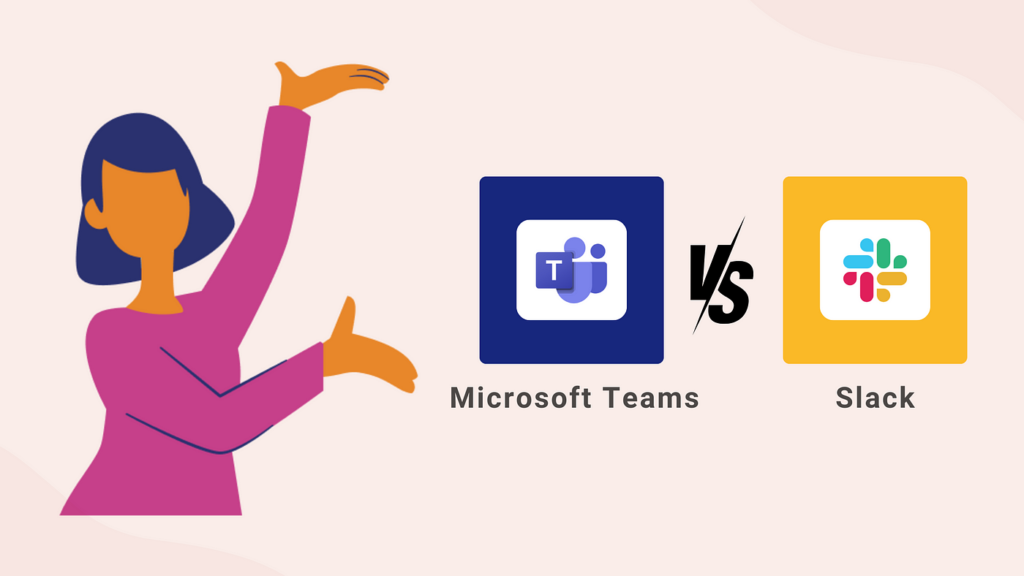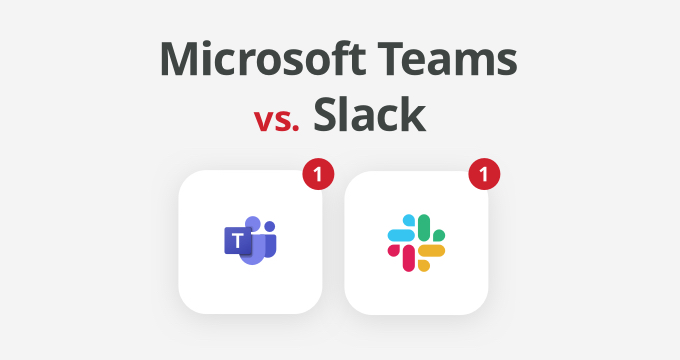Slack vs Microsoft Teams for remote work—which platform delivers the best experience? Effective communication tools are essential for keeping teams connected, productive, and organized in the evolving world of remote work. Slack and Microsoft Teams have emerged as the go-to platforms for many businesses, but which one is right for your team?
In this blog, we’ll dive into each tool’s key features, pros, and cons, helping you decide which remote work tool will keep your workflow smooth and your team collaborating effortlessly. Whether you’re seeking flexibility, integrations, or overall ease of use, we’ve got the insights you need to make an informed choice.
1. User Interface Comparison: Ease of Use and Experience

When it comes to remote work, the interface of a communication tool can make or break team collaboration. Slack and Microsoft Teams offer unique designs, but which provides a smoother experience?
- Slack: Known for its simple, intuitive interface. It’s easy to navigate with channels on the left and messages front and center. Direct messages, notifications, and integrations are easily accessible, making it a top pick for smaller teams or those needing a minimal learning curve. Customization options, like color schemes, let users personalize their experience.
- Microsoft Teams: A more complex interface due to its integration with the entire Microsoft 365 suite. Communication is organized into Teams and Channels, offering built-in Office apps, task lists, and more layers for collaboration. This additional functionality is great for teams already using Microsoft tools but may feel overwhelming to new users.
Key takeaway:
- Slack wins for ease of use and simplicity.
- Microsoft Teams offers more robust features but requires more time to get accustomed to.
2. Slack vs Microsoft Teams for Remote Work: Integration Capabilities with Third-Party Tools

In remote work, seamless integration with third-party tools is key to improving productivity. Both Slack and Microsoft Teams offer robust integrations but serve different user needs.
- Slack: Boasts a huge catalog of over 2,000 third-party app integrations, including popular tools like Google Drive, Trello, Dropbox, and Asana. Adding apps is quick and easy, making Slack the go-to for teams that prioritize flexibility and work across multiple platforms.
- Microsoft Teams: Designed for deep integration within the Microsoft 365 suite (Outlook, Word, Excel, SharePoint, OneDrive), Teams offers seamless collaboration for those using Microsoft tools. You can even co-edit documents in real-time directly within the platform. Though Teams has additional apps through its store, it’s best suited for teams within the Microsoft ecosystem.
Key takeaway:
- Slack is ideal for teams needing wide third-party app compatibility.
- Microsoft Teams excels for those heavily using Microsoft products.
3. File Sharing and Storage: Which Platform Handles It Better?

Efficient file sharing and ample storage are key for remote teams, and both Slack and Microsoft Teams offer solid solutions with some key differences.
Slack:
- Allows file sharing within channels or direct messages.
- Integrates with tools like Google Drive and Dropbox for easy file upload.
- The free plan offers only 5 GB of storage for the entire workspace, which can be limiting for teams handling large files.
- Paid plans (e.g., Pro plan) offer up to 10 GB per user
Microsoft Teams:
- Integrates seamlessly with OneDrive and SharePoint.
- Offers 1 TB of storage per user, perfect for teams managing large data volumes.
- Files shared in channels are automatically saved in the associated SharePoint site, making file retrieval quick and organized.
For teams needing large amounts of storage or those already working in the Microsoft ecosystem, Microsoft Teams is the better choice. However, Slack’s simplicity and integration with third-party storage tools may be sufficient for smaller teams or those needing less storage.
4. Slack vs Microsoft Teams for Remote Work: Collaboration Features

Collaboration is key for remote teams, and Slack and Microsoft Teams offer distinct approaches to support seamless teamwork.
Slack:
- Provides an agile, channel-based structure for quick and informal collaboration.
- Team members can easily create channels for specific projects or topics, exchange messages, share files, and integrate apps for productivity.
- Threaded messages keep conversations organized without cluttering the main feed.
- The Huddle feature allows quick voice or video calls within channels for impromptu discussions.
Microsoft Teams:
- Offers more structured collaboration with a focus on larger teams or organizations.
- Office 365 integration allows teams to co-edit documents in real-time, making collaboration more efficient.
- Channels not only host discussions but also meetings, task lists, and documents.
- Built-in task management, video conferences, and real-time document co-editing make it an all-in-one tool for formal collaboration.
While Slack is excellent for quick communication and informal collaboration, Microsoft Teams excels in formal, structured team collaboration with integrated Office 365 features
5. Customization and Personalization: Tailoring the Tool to Your Workflow

Customizing your remote work tool is key to staying organized and productive. Slack and Microsoft Teams offer personalization options but cater to different needs.
Slack:
- Offers high flexibility with themes, custom emojis, and tailored notifications.
- Channel organization is easy, allowing users to star or prioritize important channels for quick access.
- Simple design makes customization accessible for users of all tech levels.
Microsoft Teams:
- Focuses more on functional customization through its deep Office 365 integration and third-party app support.
- The Tabs feature allows users to pin essential documents and apps within channels for easy access.
- Leverages Power Automate for workflow automation, enabling teams to reduce manual tasks and streamline processes.
6. Conclusion: Which Platform is Better for Your Remote Work?
Choosing between Slack and Microsoft Teams ultimately depends on your team’s unique needs and workflow. Slack is great for teams prioritizing simplicity, flexibility, and quick communication, offering easy customization and a wide range of third-party app integrations.
On the other hand, Microsoft Teams shines for teams requiring structured collaboration and deep integration with Office 365, making it ideal for larger organizations needing robust file-sharing and real-time collaboration. Both platforms are powerful remote work tools, so the decision comes down to which fits best with your team’s goals and workflow.
Don’t forget to check out our blogs for more expert insights and exclusive content! Thank you for reading

